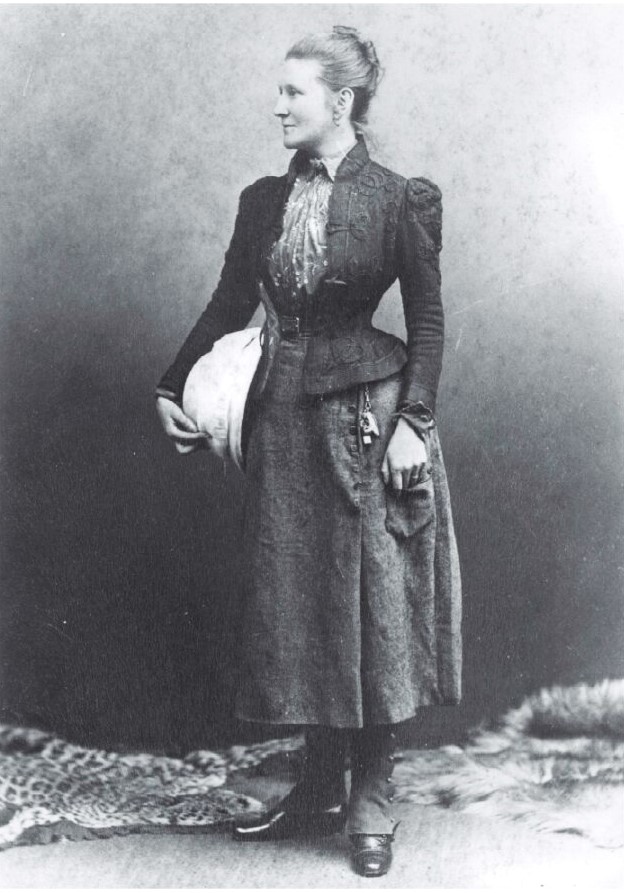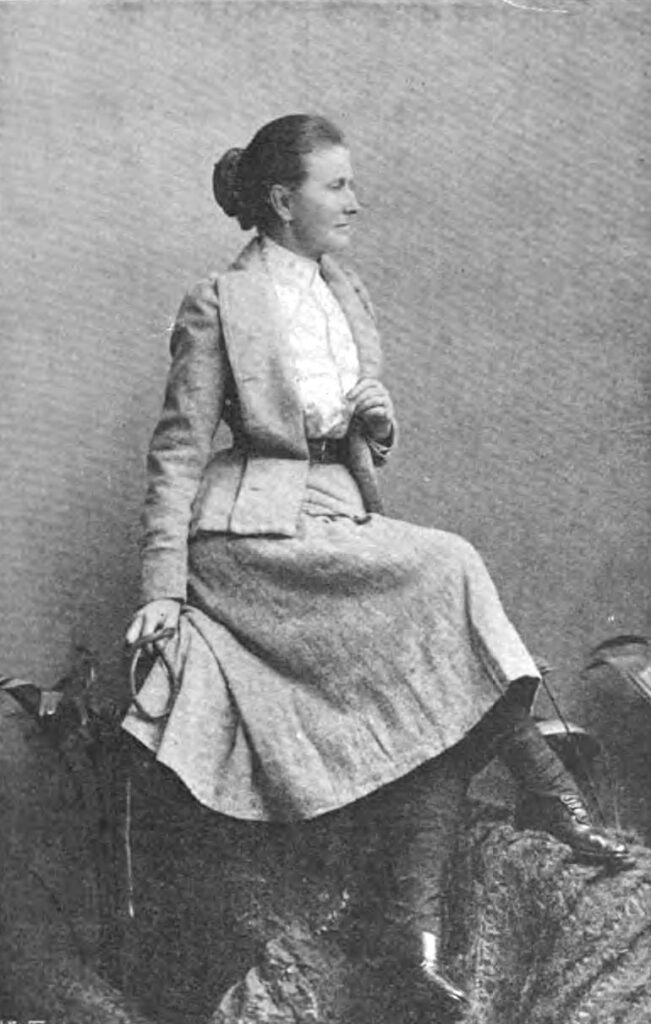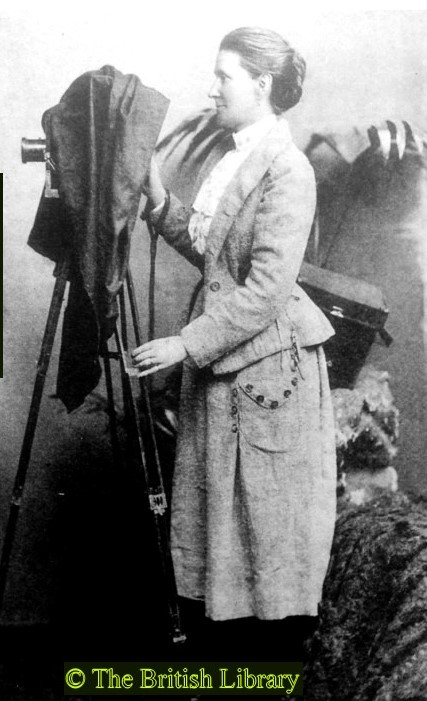A page of references on Mabel Bent’s travelling outfits.

The Newry Telegraph for Thursday, 3rd January 1895: “Nowadays so much is talked about rational dress, cycling costumes, and the relative value of a divided skirt and knickerbockers, that it is interesting to know that Mrs Bent’s ideas on the subject are simple and the result of long experience. Her costume never varies, for she has found the same kind of dress equally useful in South Africa, Arabia, and the Isles of Greece. Her outfit, which is very pretty and even conventional, consists of a tweed coat and skirt coming down below the knees, breeches, gaiters, and stout shoes. The skirt is full, being pleated; and by a clever arrangement invented by the wearer herself it can be altered accordingly as to whether it is wanted for riding or walking. With this costume is worn a pith hat and gause veil.”
Shibham in the Hadramawt, Yemen, January 1894, from Mabel Bent’s diary: “The viziers came to greet us about 7.30 next morning. We had all stayed in bed till it was quite light and they brought two extra horses… While the camels were loaded a lot of women came to see me and I sat in a chair and took off my gloves at their request and let them hand my hands round. They asked to see my head, so then they got my hair down, dived their fingers down my collar, tried to open the front of my dress and take my boots off and turned up my gaiters…”

Nurses R.A. Blennerhassett and L.A.L. Sleeman, Adventures in Mashonaland, by Two Hospital Nurses. London, 1893, pp.194-7: “We had hardly shaken hands, when Mrs. Bent asked us what we thought of her dress. This was a difficult question to answer. Mrs. Bent’s costume consisted of an ordinary print blouse, worn over obvious stays; a woollen kilt, reaching to just below her knees; knickerbockers; top boots; and a pith helmet, which gave its wearer something of the air of a Britannia who had exchanged the rest of her garments with a scarecrow! We gently suggested that if the fair explorer had consulted Redfern, or, better still, Martin of Dublin, either would have built her something much more workmanlike and beguiling.”
Llewellyn Cambria Meredith (1866-1942), the Bents’ headman and wagonmaster on their 1891 Great Zimbabwe expedition (quoted in R.H. Wood, Heritage of Zimbabwe 16(1997): pp.55-66): “Mrs Bent was a middle aged lady, she wore a man’s helmet and a monocle and a short skirt and knee breeches and. leather leggings.”
The Washington Times, 1 November 1905: “That the woman explorer who surmounts unendurable hardships and faces death and danger in their most terrifying forms is usually a delicately nurtured fragile essentially feminine woman and as far removed as possible from the Amazon one might so naturally picture her is a fact likely to upset all one’s preconceived ideas about her … Mrs Theodore Bent, [a] woman whose appearance suggests rather the drawing room than the trackless desert, has outstripped many a male explorer in her daring and her defiance of fatigue and danger. Not long ago, when she was traveling with her husband in south Arabia, she had many a narrow escape from cowardly bullets, and once she was ordered to dismount ‘in order that her throat might be cut.’ Mrs. Bent, it may be interesting to add, travels in a ‘tweed coat and skirt coming well over the knees, breeches, gaiters, and shoes.’ She wears a pith hat and always sleeps in a hammock.”

The Album: A Journal of Photographs of Men, Women, and Events of the Day, 8th July, 1895, Vol. II, No. 23, pp.44-45: “My travelling dress consists of a tweed coat and skirt, a pith hat, with breeches and gaiters. The skirt is made in pleats, and is so arranged as to act as riding habit when I am on horseback. When actually in camp, that is to say, during the heat of the day – for early morning and evening are the only safe hours to travel – I put on a linen shirt or blouse and ordinary skirt.”
